




The Packaging Conference November 14 Thailand





Achieve vibrant print applications, work versatility and enhanced productivity with next
FUJIFILM Business Innovation announces the launch of four new mid- range production presses in the Revoria PressTM series globally. The Revoria PressTM EC2100S and Revoria PressTM SC285S are equipped with a specialty toner station in addition to the four-colour toners, enabling five-colour printing in one pass, the Revoria PressTM EC2100 and Revoria PressTM SC285 are four-colour presses.
All four products are compact in size with high print quality and speed. Worldwide sales will begin from January 2025 onwards.
The Revoria PresS series was launched in July 2021. The flagship model, the Revoria Press PC1120 caters to the highend professional market, offers a onepass six colour print engine of up to two specialty toners, print resolution of 2400 dpi, high-speed printing at 120 pages per minute and high image quality printing with Super EA-Eco toner which has one of the smallest toner particle sizes in the industry.
With its high image quality, superior productivity, and value-added creation through specialty colour printing, the Revoria Press PC1120 is leading the production printing market globally in Europe, the United States and the AsiaPacific.
The Revoria Press EC2100S and Revoria Press EC2100 print at a high speed of 100 pages per minute and are primarily utilised for an extensive range of commercial printing and quick printing. While the Revoria Press SC285S and Revoria Press SC285 with a printing speed of 85 pages per minute are utilised for quick printing and in-house printing. All four products achieve a compact machine size through the newly developed Vertical Toner Development Technology. They are also designed to incorporate the technology

that enables high image quality printing, which is a feature of the flagship model, the Revoria Press PC1120.
The products can handle an expansive range of paper weights from lightweight 52 gsm to heavyweight 400 gsm, and paper sizes, from a minimum of 90 x 146 mm up to 330 x 1300 mm*4 without reducing its printing speed. Equipped with a new feature, Smart Monitoring Gate D1, it detects colour variation and front-to-back misalignment during printing, enabling automatic correction in real time to maintain high print quality without compromising on productivity.
To generate high-quality images and smooth workflows, there will be two choices of Revoria Flow and Fiery
print servers available. With the newly developed vertical toner development system that can contribute to maintain compact machine size, users can now produce premium quality printed materials, even when working with a wide variety of products, small lots, and short delivery times, such as catalogs, brochures, manuals, and sales promotion materials.
The new product made its debut at the "drupa 2024", the world's largest printing and media industry trade fair held in Germany in May 2024. Since then, it has received high praise and expectations from numerous customers and professionals in the printing industry at worldwide exhibitions. FUJIFILM Business Innovation will continue to contribute to


the expansion of the printing business by providing products that realize increased value to customers through the delivery of solutions ranging from offset to digital printing and even print workflow DX solutions, as a comprehensive vendor delivering to customers worldwide.
Main Features of the New Products
1. Revoria Press EC2100S / SC285S (available to both products)
Equipped with a one-pass five-colour print engine, one specialty toner*1 can be used in addition to the CMYK toners. Full range of support functions are available for easy utilisation of specialty colours.

A variety of specialty toners are available in Clear, Pink, Custom Red, Gold, Silver and White. A variety of metallic colours can be expressed by mixing highly brilliant Gold and Silver toners with CMYK toners.
The image data is automatically divided into five colours of CMYK and Pink on the Revoria Flow and Fiery print servers.
Designs can be created while checking the expression of specialty colours with the preview function. Users can save time and effort for test printing.

Users can easily change the specialty toner in about 10 minutes
2. Revoria Press EC2100S / EC2100 / SC285S / SC285 (available to all four products)
Efficient space utilisation with compact LED printhead and highresolution print at 2400 dpi
Increase work productivity through the high-speed printing. The Revoria Press EC2100S / EC2100 print at 100 pages per minute*2, while the Revoria Press SC285S / SC285 print at 85 pages per minute.
Versatile media handling for a wide range of applications.
The compact belt roll fuser enables high-quality printing on textured paper.
Equipped with an Air Suction Feeder*6 that ensures reliable feeding of coated paper, which tends to stick to the paper. The Static Eliminator D1*6 removes static electricity from film paper
and other static-sensitive printing paper, enabling reduction of adhesion between sheets of paper for work efficiency.
The machine also supports paper output such as envelopes, water-resistant paper, and cardboard for packaging
The Print Inspection System inspects printed materi als automatically and in real time to detect printing defects such as dots, stains, pinholes, streaks, and paper folds. The system inspects readability of characters and barcodes, numbering information continuity and front/back characters and numbering continuity
The Revoria Press EC2100S / EC2100 will be compatible with Revoria Flow and Fiery® EC21 / EC22 servers. Similarly, the Revoria Press SC285S / SC285 will be compatible with Revoria Flow and Fiery® SC21 / SC22C servers. Customers can choose from several options of print servers to meet their needs.
What started out many years ago as a Hunkeler only “open house” has now become a powerhouse industry showcase of technology for the printing industry. We talked to Hans Gutt, Chief Marketing Officer, Hunkeler and Matthias Annaheim, Head of Marketing, Hunkeler on what you can expect from this year’s event held from the 24th to the 27th February.

Could you explain about the Hunkeler Innovationdays. When was it started and what can visitors expect today. Its not just finishing equipment like many years ago?
Hans Gutt -: What started out as a small open house has now become The Hunkeler Innovationdays (HID) - a bi-annual event to be held for the 15th time from February 24 to 27, 2025. It is the premier industry event for digital production print, inkjet, and finishing technology as well as a great networking event held in Lucerne, Switzerland. Besides hardware you also can explore workflow software solutions and of course meet relevant suppliers for paper, ink, etc.
Matthias Annaheim: - The HID is not a traditional trade fair. The HID is much more of a coming together of the entire industry in a very special atmosphere. It is particularly impressive to see all the
major industry suppliers on no-frills stands and relatively small spaces, side by side, providing an unparalleled overview of the latest developments and solutions. Here you can experience the technologies up close, touch them, test them and see them in action.
The fact that there is no admission charge and that every participant receives free food and drinks is a real rarity in this day and age and underlines the unique character of this event.
In 2025, how many partner companies will join the event and how big in terms of size is the event today.
Hans Gutt - About 120 exhibitors on 110 booths in 2 halls will be at Hunkeler Innovationdays 2025. A good number of them showcasing live running inline and near-line end-to-end solutions with pre- and post-finishing from Hunkeler
and Muller Martini plus different other partners. It is one of the only events where you can actually see live creation and production from the blank rolls and sheets to the finished product.
Matthias Annaheim: - About 7000 unique visitors are expected from all around the world to explore cutting-edge solutions for continuous and sheet-fed trends, shaping the future of digital print. However, it is not a target in itself to increase the number of visitors. The focus has always been on quality rather than quantity – we are looking to welcome the right experts and industry representatives to the event.
What is the relationship in terms of technology offered by Hunkeler versus Muller Martini.
HID remains an independent industry event organized by Hunkeler AG and its partners. Muller Martini continues

Experience the latest fully automated solution for the production of glued book blocks from the sheet: The Starbook Sheetfolder from Hunkeler enables efficient and economical production, perfect for runs of 1 copy or more. It can be optimally combined with the Vareo PRO perfect binder from Muller Martini, which processes your book blocks seamlessly thanks to innovative individual drive technology.
mullermartini.com
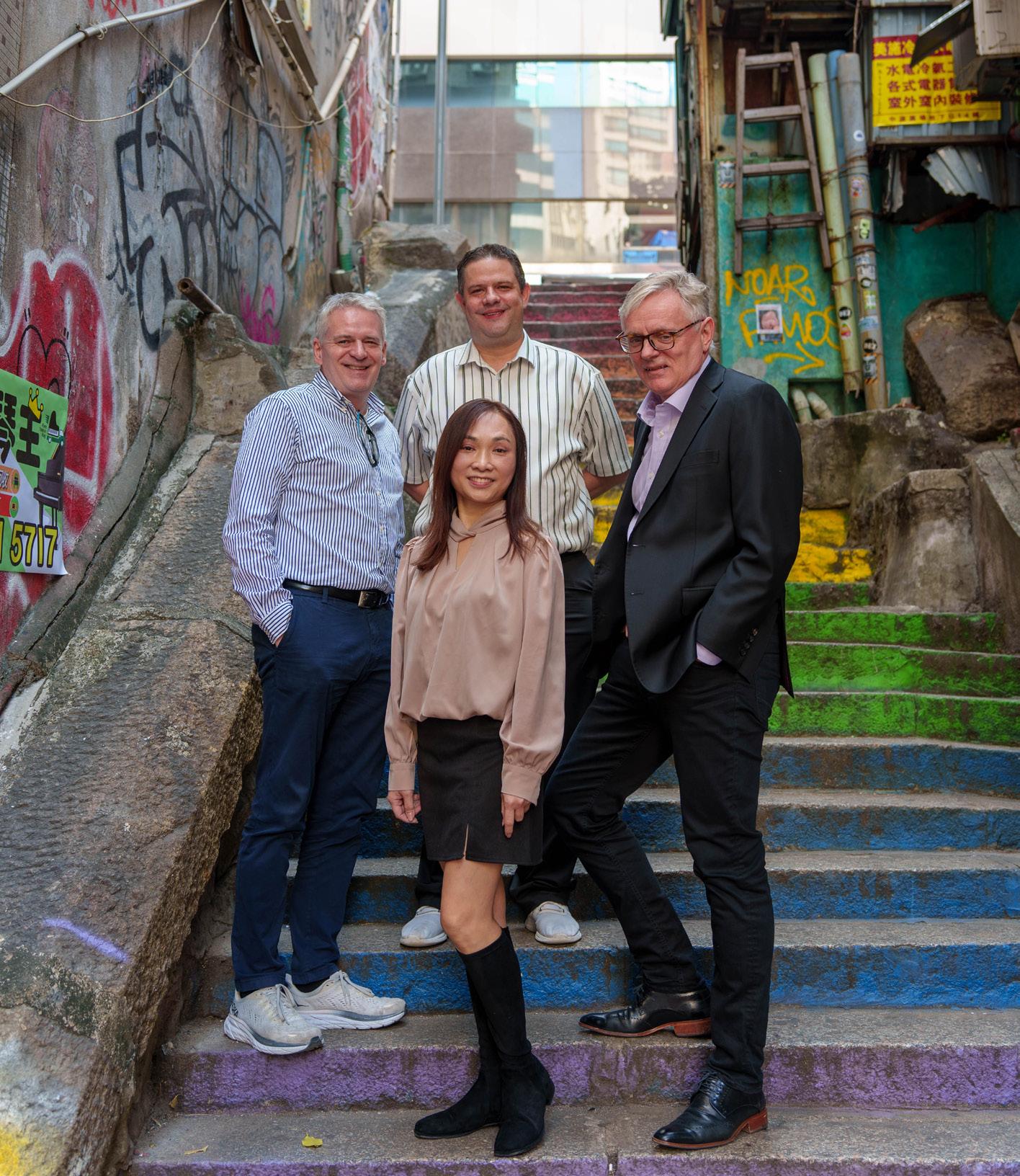
as an exhibitor participant in the event, showcasing combined Muller Martini and Hunkeler solutions. In the background, Muller Martini obviously strongly supports the event and the Hunkeler brand. The HID will thus continue in its proven form – enriched by the additional support.
In past years how has the response been from Asian visitors to the event. Are you expecting a good turn out this year
The sign ups from Asia for the event is already looking good – not least from Japan, China, Korea and Australia – but most importantly, the relevance of the visitors to the event is at the top-end of the scale. This is not visitors coming around to have a look-see or collect brochures. This is visitors that are already - or just about to be - involved in the digital printing business, that wants to be up-to-date with the latest development (yes, there will be new stuff even though Drupa was only 8 months ago!) and connect with other movers & shakers in this segment of the industry.
What new technology do you think will have an impact on the industry here in Asia. Is Hunkeler
Innovationdays all digital technology or is other technology also on show.
The book solutions will clearly be the main draw, and will have an almost immediate impact on many of the markets in Asia. This market is growing(!) as opposed to many other segments in our industry. The end-to-end production, digital file to the finished book, that will be the focus of the majority of our customers. And yes, HID is all about digital.
Are their workshops or seminars that are available to see, and do companies need to book for these to guarantee their seats?
Hunkeler Asia-Pacific team based in Hong Kong l-r - Patrick Lehmann, Oliver Broch, Clora Kong and Sven Olsen
Hans Gutt -:: The main action is happening in the two exhibition halls and in the catering area for networking. The beauty of Hunkeler Innovationdays is, the visitors can compare products side by side and easily go back and forth between the different no-frills booths.
All subject matter experts are onsite to answer questions from visitors without having to make appointments months in advance. The learnings are therefore not from listening in meetings rooms, but rather from talking to experts and peers during the free lunch in the networking area. So don’t say there is no such thing as a free lunch!
Could visitors also add a side trip to visit Muller Martini if time permits this.
While many of our Muller Martini and Hunkeler colleagues will be busy at the HID in Lucerne, there will definitely be somebody available to give a factory tour and a look at the Muller Martini showroom in Zofingen should anybody wish to visit – Zofingen is only about an hour’s drive away from Lucerne. Still, anybody wanting to go should always connect with their Muller Martini contact person prior to such visit.
Where can our readers go to find out more information and register for these events.
Please go to www.innovationdays.com for more information and registration. Looking forward to see everybody there.


PAPER. BECAUSE IT’S REAL.
When you want to get a feel for the Printing industry, ask the paper people.
We finally go the chance to cath up with Eddie Chan, Senior Vice President, APAC, UPM Specialty Papers and talk about the happenings with UPM and the industry in general. Enjoy the indepth interview below.
1. Please tell our readers a little about Eddie Chan, your industry history etc.
Eddie Chan (EC): It has been 26 years since I joined UPM in 1998, and I have had the privilege of being part of UPM's development in China from its very early stages. I initiated our operations in Wuhan and South West China, and since then, I have worked in Shanghai and Guangzhou. Currently, I oversee UPM’s sales across the Asia-Pacific region, encompassing China, Australia, Japan, South Korea, Singapore, and beyond.
The diverse cultures and consumption preferences in these markets present new challenges that I greatly enjoy addressing.
I am incredibly proud to see that UPM's strategic vision, product and service reputation, sustainability efforts, and innovation capabilities have been widely recognized within the industry over the years. I am confident that our story will continue, driven by our consistent reliable products, industry-leading R&D capabilities, and sustainable innovations.
I am always open to new experiences and ready to embrace challenges. My career has spanned across different industries, including media and banking, which has broadened my perspective and honed my ability to think flexibly and adapt quickly to new situations. This diverse background has been instrumental in my approach to leadership at UPM.
2025 and beyond, I know you don’t have a crystal ball, but what do you think is in store for our industry, growth, the same or tough times?
(EC): From my perspective, Sustainably sourced and safe raw materials to make

Eddie Chan, Senior Vice President, APAC, UPM Specialty Papers




paper products and solution will play more and more important role in our future life.
Opportunities: Rising demands for paper and packaging products- Highergrowth geographies: We foresee that in the coming years, factors like population growth, urbanization, and the expansion of the middle class will boost demand for high-quality paper and packaging products, especially in Asia, which is home to over half of the world's population.
Growing demands in sustainable products: As consumption upgrades and consumer awareness of sustainability continue to rise, we see new opportunities emerging in specialty and packaging papers.
However, it is evident that the development of E-commerce, the complicated global economy and the shifting consumer preference also pose challenges to our industry.
UPM, with a strong, balanced portfolio, we are confident to the future. In the coming years we seek further growth in advanced materials and decarbonization solutions and strive to capture new business opportunities.
3. When people now look to source paper, what are the biggest considerations they must look at before making the purchase?
(EC): Quality and consistence are top priorities for paper buyers, and these have been UPM's long-standing strengths. Our consistent paper products offer easy printability and high-quality performance across various aspects of life and production.
A reliable supply chain and trusted long-
term partnerships are also crucial for customers when sourcing paper. We boast a dependable supply chain and an extensive sales network across the APAC region, ensuring a reliable supply of paper that meets high-quality standards and is backed by exceptional customer service.
Last but not least, sustainability is a critical factor for consumers when considering paper purchases. Our products enable our customers and consumers to make more sustainable choices. Committed to sustainable development, all UPM paper and pulp mills have certified FSC and PEFC chain of custody. In the Chinese market and APAC region, we offer highquality office paper brands and graphic papers.
What plans do UPM have for Asia/ Pacific in the coming years to service your many clients here?
(EC): Asia is our second-largest market, representing 22% of our sales globally. The market is growing rapidly due to population growth and economic development, with the rising awareness of sustainability. We anticipate more growth opportunities here and are committed to delivering our best solutions to better serve our customers in this region.
Last question, what about packaging, we all hear its booming, do you feel this is the case and ion yes do you think its going to continue or will it peak just like other markets?
(EC): In recent years, the demand for sustainable packaging has been on a continuous rise, Paper is one of the most recycled materials with a widely available recycling infrastructure and an existing market for the recycled material. UPM now has a wide range of high-quality,
sustainable packaging solutions produced in collaboration with processors. All UPM paper products are repulpable & recyclable.
Through the supply of paper raw materials and further cooperation with processors and packaging value chain partners, UPM offers more diversified packaging solutions. We strongly believe the packaging paper market holds significant potential for business growth.
For example, we have UPM Solide™ Lucent, a recyclable, compostable, and food-safe barrier base paper, which can offer a perfect base for highbarrier packaging. It is easy to convert, extremely smooth and exceptionally dense, minimizing the coat weights required. Also, it is strong enough to perform efficiently on high-speed lines. Collaborated with BOBST and Michelman, UPM Specialty Papers has developed the oneBARRIER FibreCycle recyclable packaging solution, using UPM Solide Lucent as base papers.
Another example is a new packaging developed jointly by UPM Specialty Papers and Fazer for Fazer's oatmeal rice crackers, using UPM ConfidioTM barrier paper. The award-winning packaging has been recognized in the WorldStar, ScanStar and New Wood competitions and has already appeared in the frozen food aisle of Finnish supermarkets.


Your one stop for all flexo plate mounting solutions
With our extensive range of flexographic technology solutions, including unique plate mounting technologies, splicing and process tapes, we offer unparalleled expertise. Our dedicated team will help you find the perfect solution, providing onsite training to enhance your operational expertise. Witness the remarkable results: improved print quality, enhanced efficiencies, and a tangible reduction in waste and emissions. Choose tesa as your trusted flexo partner.
Are all potential digital printing volumes being produced digitally?
By German Sacristan - Keypoint Intelligence ( www.keypointintelligence.com )
The print industry continues to experience a natural and organic shift from offset to digital printing, driven primarily by a growing demand for shorter print runs and greater customization. But a critical question persists: Are all potential digital printing volumes being produced digitally? If not, what barriers are hindering the transition?
The State of Offset vs. Digital Printing Printing is one of the few industries where analog (offset) printing remains dominant despite the increasing adoption of digital technologies. This slow transition is largely due to cost differences. For example, consumables like ink remain significantly cheaper in offset printing—a factor that’s unlikely to change due to the fundamental differences between offset and digital inks.
Offset printing continues to be more costeffective for longer print runs due to its lower consumable costs and economies of scale. However, trends in shorter runs and customized print communications are still slowly shifting market dynamics in favor of digital printing, which enables more targeted and effective engagement.
While the organic shift towards digital progresses, analog printing remains resilient and relevant despite its decline. Notably, a recent survey revealed that several print service providers (PSPs) plan to avoid further investments in offset technology. But the real question of interest is: How quickly are PSPs transitioning to digital, and what factors influence their pace?


Drivers of the Offset-to-Digital Transition
The transition to digital printing has gained a significant momentum, fueled by changes in cost dynamics, operator labor challenges, and (again) the ongoing trend towards shorter runs and customization. The crossover point—where digital becomes more economical than offset— has shifted recently due to two major factors:
• Rising Offset Costs: Expenses associated with make-readies, paper waste, and plates have seen a significant increase.
• Falling Digital Total Cost of Ownership (TCO): Over the past decade, the TCO of large production digital printing equipment has dropped by more than half. Modern large production digital presses offer lower running costs, while producing far larger average monthly print volumes (AMPVs) compared to presses from over a decade ago.
A major challenge for the market is that some PSPs seemingly lack awareness of their cost crossover points. Surprisingly, a recent Keypoint Intelligence survey found that 30% of US-based PSPs do not calculate their cost crossover points at all.









Equally concerning, 26% of PSPs rely on outdated methods that are timeconsuming and potentially less reliable. This means nearly half of PSPs operate without cost crossover data or depend on outdated methods that do not incentivize them to keep up to date with their current crossover points.
Calculating cost crossover points is a crucial exercise for PSPs to understand the cost-effectiveness of their operations, yet many PSPs face significant challenges. For example, 40% of PSPs cite a lack of necessary data as a barrier, while 30% find the process too time-consuming. These obstacles often deter PSPs from performing such calculations. However, overcoming these challenges is essential as staying informed about cost crossover points enables PSPs to optimize production choices and improve profitability in the long run.
The printing industry urgently requires tools that enable PSPs to calculate cost crossover points quickly and easily. Recognizing this need, Keypoint Intelligence has launched a web-based Cost and Time Cross Over Point Estimator.


This tool addresses the data and time barriers PSPs face by:
• Leveraging market-average data to fill information gaps.
• Providing cost crossover estimates in seconds.
• Allowing for easy customization of inputs to reflect each individual PSP’s unique operational metrics, resulting in personalized estimations.
Designed for fast pre-qualification and decision-making, the tool ensures PSPs can allocate each job to the most costeffective technology. Digital printing vendors can also utilize the tool to quickly identify which of their customers may fit
the profile to benefit from investing in a new digital printing press.
The shift from offset to digital printing represents a transformative opportunity for the industry. However, its success and acceleration hinges on PSPs’ ability to quickly, easily, and accurately determine their cost and time crossover points. Keypoint Intelligence’s innovative online tool, powered by market-average data, simplifies this process—empowering PSPs to make informed decisions in seconds and stay responsive to market shifts.

Simply consistent
Decrease waste and setup with predictable plates
Simply efficient
Increase on-press performance with a robust plate
Simply sustainable
Support sustainable inks and substrates all with the same plate
Simply better
Address your most demanding brand and quality requirements
From prepress to on-press, deliver the efficiencies and productivity needed from your plates to maximize your bottom line.
This month, WINDMÖLLER & HÖLSCHER (W&H) organized three seminars here in Asia Pacific. The latest trends, news and innovations for the flexible packaging industry were presented.
By Tim Klappe Regional Sales Manager, Windmoeller & Hoelscher Asia Pacific Co., Ltd
From extrusion to printing to converting, here the main topics that were presented. First of all, it’s good to be in the flexible packaging business. Globally the flexible packaging business is growing with 4.8%. In Asia it is expected to grow with 6.8%. There are so many benefits of flexible packaging versus rigid packaging.
Less material is needed, less costly to make, less carbon footprint, easier to transport and easier to dispose of. Disposal is a key point though. Sustainability is the buzzword today. 78% of global consumers feel that environmental sustainability is important.
They like the idea of being sustainable and want to live more sustainable lives. Governments, brand-owners and consumers and concerned about the environment. Making sustainable packaging that can be recycled is important. As one of the world leaders in manufacturing machines for the flexible packaging industry, WINDMÖLLER & HÖLSCHER (W&H) plays an important role in the development of sustainable packaging products.
Extrusion
So far, PET/PE Duplex, Triplex- and other multi-layer laminates with different
chemical characteristics have been the market standard. Unfortunately, when materials have different chemical characteristics, recycling is difficult. The solution is either working with monomaterials or with lamination layers that are chemically uniform within certain guidelines.
One example is MDO-PE film - Machine Direction Oriented - PE film. This is a type of film that is 100% recyclable and environmentally friendly. It is made using a special processing technique that involves stretching PE films in the direction it is being produced. This process improves the film's properties and makes it suitable for making pouches using PE only. Therefore, it is good for recycling. W&H has tested MDO-PE film-based pouches with different types of barrier coatings and films. There is a solution for mono-material packaging for almost every type of application. From food to chemicals.
Using recycled plastics is another way to contribute to a sustainable environment. Collecting used plastics and converting these into resins for making films is already used in many applications. For example, bags for industrial packing and secondary packing like stretch films. More

and more applications are coming to the market. W&H plays an important role in the development of the use of recycled materials. http://www.wh.group/int/en/ sustainability/circuar_economy/
Reducing waste during the production of film and lower energy cost are other areas where W&H is launching solutions. For example, the TURBOSTART® function for extrusion lines reduces the many steps for the machine set-up to just seven buttons on one screen. Saving a lot of time and film waste in the process. New camera technology acts as the digital eye of the blown film operator. Enabling


consistent film quality without the need of years and years of operational experience.
Printing
Producing recycled materials is one thing. But what about printing it? We all want to see nicely printed pouches in the supermarket. Especially the brandowners. Making pouches with resins made of recycled materials (PCR) has some negative effects on the way the film behaves in the web printing machines. You can have issues with repeat tolerances, web shifts, web breaks and/ or creases. By continuous measurement of the actual print repeat length under tension conditions and dynamic repeat length corrections during production, the W&H CI flexographic press range and the HELIOSTAR® gravure presses ensure a perfect register. Even during
ramping up and ramping down or at full production speed.
Printing barrier coatings benefits recyclability. Pouches made of laminates of one material, like MDO-PE and LLDPE, with barrier coatings can have the required barrier functions for many applications. Even though the cost of barrier coatings is estimated to be slightly higher compared to PET/PE barriers, they are easy to master and quickly to implement. No primer needs to be printed.
Barrier coatings are not for all applications though. There is no one best solution. All solutions have advantages and disadvantages. Depending on the individual application. The experts at W&H can advise you.
One technology that has been in the spotlight for many years is digital printing. A technology that has completely taken over the commercial print world, the sign & display world and is making further inroads in label printing and even our flexible packaging world. In flexible packing the adoption has been relatively slow. Some main reasons are that we are working with many different substrates, high coverage of e.g. white inks and often with food related packaging.
A digital machine for this is quite different from the digital presses that we are seeing in the commercial print and label print business. W&H has created the solution. A digital hybrid press that fits into our flexible packaging world.


The digital press that W&H is developing was demonstrated at his premises in Lengerich, Germany during the period of the DRUPA exhibition.
70 years ago, W&H invented the central impression technology. This technology characterizes modern flexographic printing today. The base of W&H’s digital press is a central impression cylinder. This technology characterizes high quality flexographic printing with excellent register accuracy even with the most challenging substrates. W&H’s digital printing machine can be equipped with up to 7 inkjet printing units located above the central impression cylinder, supported by 4 flexographic printing decks for processing lacquers, white or other inks, which are usually used within the flexible packaging industry.
This enables production in Expanded Color Gamut mode and the achievement of almost all Pantone spot colors. The addition of four flexographic printing units makes it possible to print on a wide range of substrates, print many applications with substantial cost benefits. This high-performance press can reach a very high maximum speed of up to 150m/min. So, please stay tuned for the launch of W&H’s digital press. It will be exciting.
One technology that is extraordinarily powerful and maybe under-utilized at the moment but certainly will change the way we manage our operations, is sensor technology. IoT, the use of data from your equipment. We are seeing sensor technology everywhere around us these days. In our cars, at home, in planes, in the medical industry, etc. It is the 4th industrial revolution. It is affecting our flexible packaging industry as well. The use of factual data makes our production world transparent.
No need to guess. We can look at facts instead of listening to opinions by using real data to decide on operation improvements. In today’s world, digital transformation isn’t just an option. It’s an essential step for staying competitive. Statistics show that while 90% of companies recognize its importance, 80% are still in the early stages of implementation.
Why? Perceived barriers like complexity of implementation, integration in existing set up, cost and steep learning curves often hold them back. The connectivity system of W&H - RUBY – makes the implementation easier. RUBY offers flexible, scalable solutions. Ruby enables you to start small, grow the use of connectivity and data at your own pace. Our only recommendation is, don’t wait too long. This technology is growing very fast. The 5th industrial revolution (AI) is already knocking on our doors. The use of data is the foundation of future growth. The longer you wait, the more you have to catch up and the more difficult it is to implement the use of big data in your operation.
W&H Asia Pacific has for years a distribution agreement with the advanced bag and pouch making machine manufacturer B&B Verpackungstechnik. In 2024, W&H Asia signed a distribution
agreement for South Korea, Taiwan, Thailand and the Philippines with the market leader in lamination equipment Nordmeccanica, Italy.
Early this year, W&H Asia Pacific and the market-leading slitting machine manufacturer Kampf/Atlas signed a distribution agreement for Indonesia, Vietnam, Philippines and Thailand.
The paper-bag making machine manufacturer GARANT Machinery is a subsidiary of W&H and contributes to the sustainable packaging solutions, as only paper substrates are converted to e-commerce-, shopping- flat-and satcheland/or SOS bags.
Further, W&H makes a series of equipment for the production of multiwall paper sacks. So, W&H Asia Pacific is very well positioned to advise you objectively on a wide range of converting solutions for the flexible packaging.
W&H Asia Pacific – a very strong service support organization With 180 people in Asia (excluding the India region) of which 70 engineers and 40 service support staff, W&H’s Asia Pacific hub in Bangkok, Thailand has a very strong presence in Asia with 11 entities and is ready to take care of you. Not only for new equipment, but also to get more out of your existing machines. A range of upgrades and retrofits are available to boost the output, speed or performance of your existing machines. This combined with production support and a complete program of trainings.
If you have any questions or want to know more about the W&H solutions, please contact the local W&H representative in your country or visit the W&H website www.wh-group.com

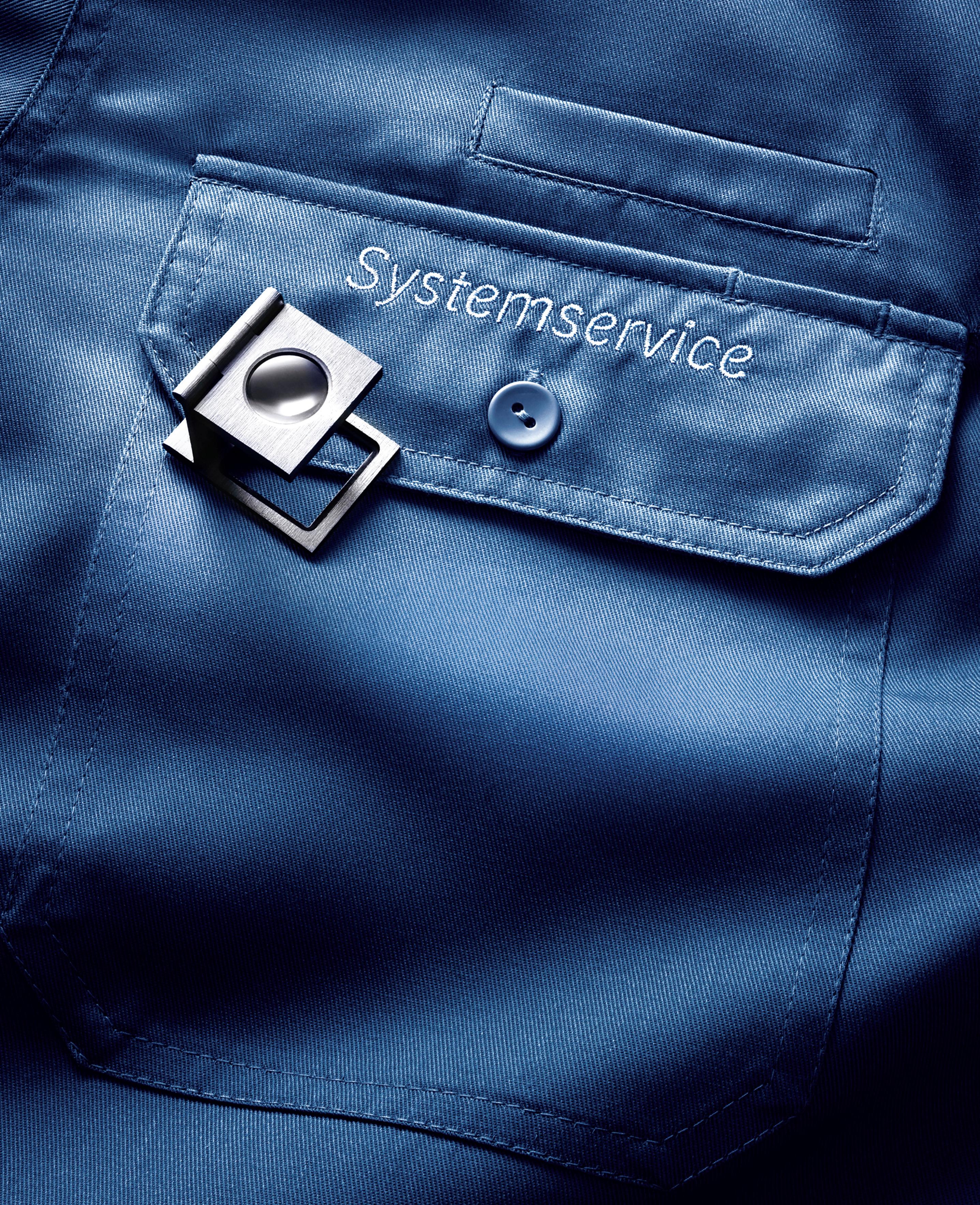

XSYS has announced the launch of nyloflex® XSN, the newest innovation in flexographic plates designed for narrow web printing.
This plate combines unparalleled performance with maximum flexibility, catering to the diverse needs of narrow web printers who require efficiency and versatility without compromising on quality.
“With the nyloflex® XSN, we’ve introduced a plate that empowers narrow web printers to meet rapidly changing market demands with confidence,” said Florian Hoelzle, Product Manager for nyloflex® plates at XSYS. “It’s unique flattop dot structure and new CleanRelease Technology ensure cleaner plates, longer print runs, and minimal press downtime, making it a game-changer in the narrow web segment.”
• Ideal for narrow web applications using UV, water-based, and solvent-based inks
• Inherent flat-top dot plate compatible with both thermal and solvent processing
• Enhanced formulation with CleanRelease Technology for reduced downtime and plate cleaning
Key Features and Benefits
Performance & Flexibility for Narrow Web
The nyloflex® XSN is a flat-top dot plate compatible with both thermal and solvent processing methods, providing printers with unmatched versatility. This dual compatibility allows seamless adaptation to evolving customer demands without the need for additional equipment or process changes.
CleanRelease Technology for Clean and Consistent Print jobs
Featuring the new CleanRelease Technology, the plate’s formulation prevents ink buildup on the plate surface. This innovation reduces the need for frequent cleanings and press stops, significantly improving Overall Equipment Efficiency (OEE).
Outstanding Compatibility with Various Ink types
It is designed to perform exceptionally well with UV inks, as well as water-based and solvent-based inks. This compatibility ensures outstanding print quality across paper and film substrates.
Plug-and-Play with Existing Equipment
Engineered as an inherent flat-top dot plate, the nyloflex® XSN eliminates the need for additional exposure units or consumables. Printers can achieve superior results right out of the box, simplifying production workflows and reducing costs.
Fast Turnaround for High-Pressure Environments
Thanks to its compatibility with both thermal and solvent processing, the nyloflex® XSN offers unparalleled flexibility for integrated printers needing quick design changes and efficient plate turnaround times.
Enabling Printers to be Brilliant “At XSYS, our goal is to help customers achieve brilliance through innovative solutions that simplify production and enhance productivity,” said Florian. “The nyloflex® XSN embodies this vision by combining cutting-edge technology with practical usability, setting a new standard for narrow web printing.”
The new nyloflex® eco series provides a unique and new approach of printing plates which are using renewable raw materials as part of the plate build up. Beside of being more sustainable, this Flexo plates comes with the advantage of a 20% faster plate processing capability, leading to time & energy savings.
The nyloflex® eco plates have been developed to enhance the quality standard in flexographic printing and lifting it to a sustainable future.
Contains renewable raw material
Proven, consistent quality in a more sustainable way
Suitable for bank- & LED exposure
Energy & Time saving
Stable & reliable plate processing
eco ACT for paper & board applications with water based inks
eco FAC for high performance corrugated post print to cope with all requirements


Wenzhou Zhehong (formerly known as Qianhong) which founded in 2017 is a printing and packaging enterprise founded by Mr. Zheng Xing, an entrepreneur from Gongxian County, in Longgang.
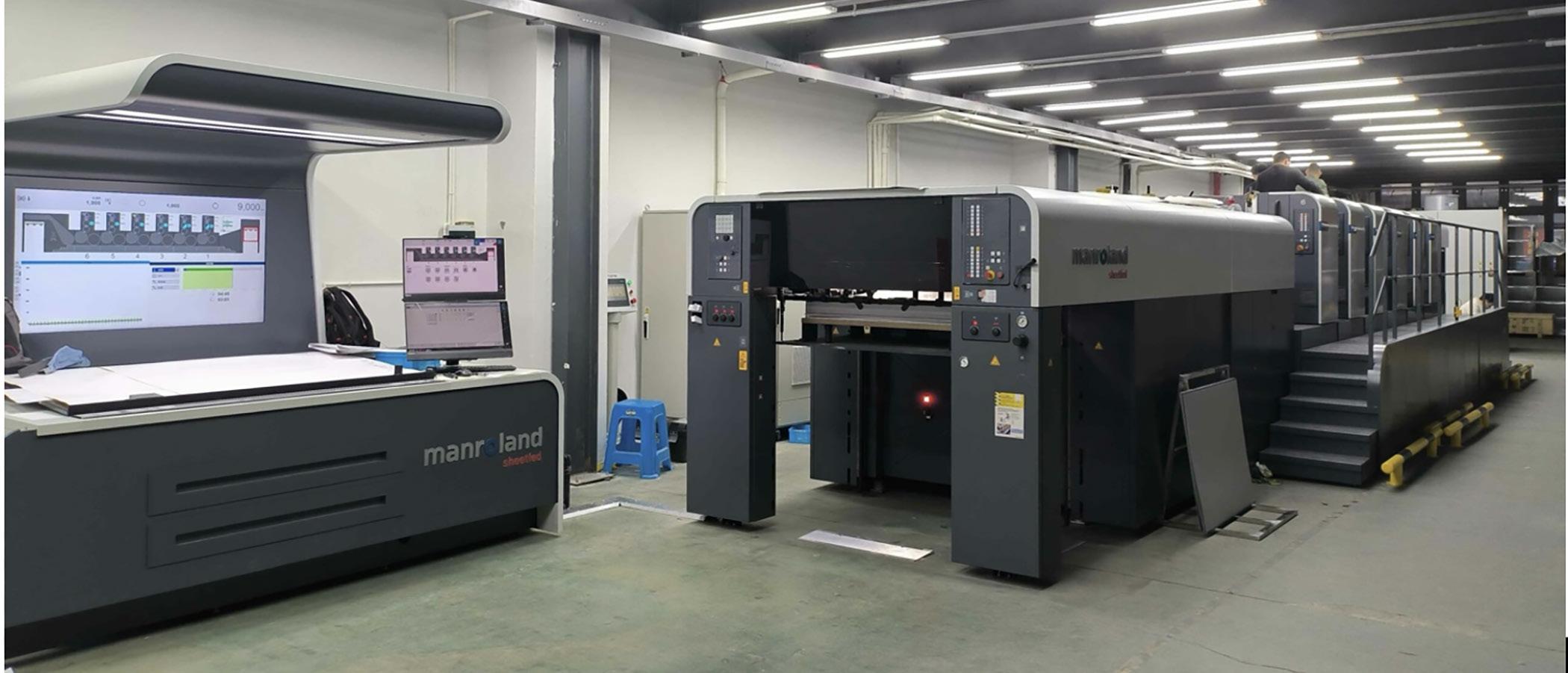
It covers an area of 5000 square meters and is an innovative enterprise that focuses on research and development, design and production.
According to statistics, there are 30000 people in Gong County, Yibin City, Sichuan Province living in Wenzhou, with half of them working and starting businesses in Longgang. Most of them are farmers from Gong County. Recently, with the strong support of the Longgang Government, Mr. Zheng Xing served as the chairman and played an important role in promoting economic exchanges and personnel interaction between Longgang and Gongxian.
Wenzhou Zhehong has multiple Manroland UV printing machines and specializes in independently developed creative children’s puzzle cards.
The product has high requirements for the printability of the printing machine, and the substrate is often as thick as 1mm. It requires the printing machine to be tested and produce high-quality products. This is precisely the strength of ROLAND700 HiPrint, which has excellently accomplished this mission and helped Wenzhou Zhehong develop rapidly over the years.

Recently, Wenzhou Zhehong successfully introduced the ROLAND700 EVOLUTION with six color printing machine, which inherits the technological advantages of the previous generation model and upgrades many automation and digital functions. Enable it to achieve a wider color gamut, more flexible process configuration, higher production speed, and lower losses.
The high productivity is a major highlight of the ROLAND700 EVOLUTION printing press. The sturdy mechanical structure ensures that the equipment remains stable at any speed under high printing pressure, resulting in consistent printing quality.
With a series of advanced quick change technologies, it is possible to complete a large number of printing tasks in a short period of time, bringing higher economic benefits to enterprises.
Whether undertaking high print runs, short orders, or urgent delivery orders, ROLAND700 EVOLUTION can perform excellently and become a powerful weapon for enterprises in market competition.





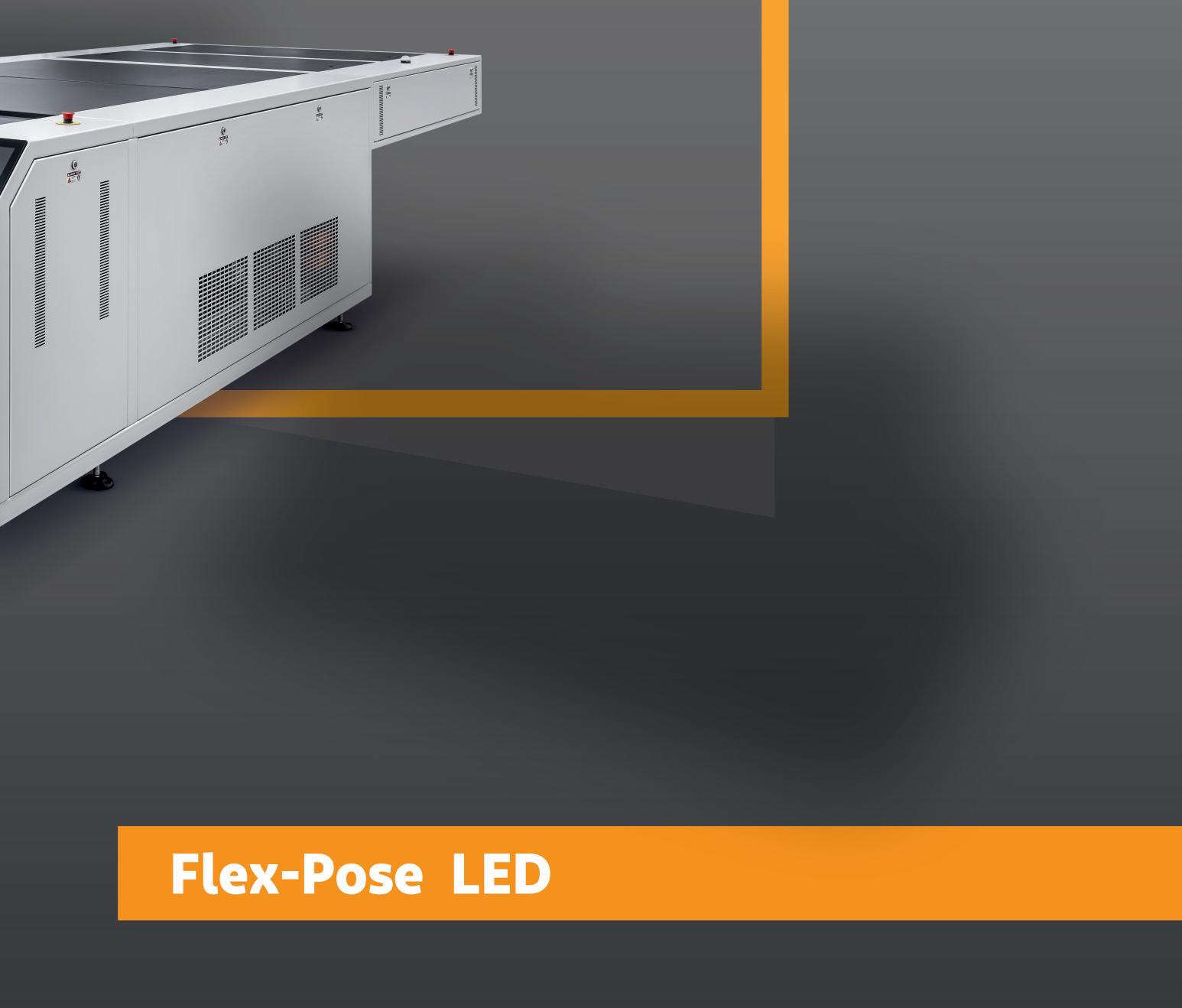
Inkjet technology’s role in today’s evolving production printing ecosystem is being cemented by rapid advances in quality, speed, and flexibility.
It’s ability to seamlessly manage variable volume demands, responsively and cost efficiently, places Print Service Providers (PSPs) in a strong position to capitalise on a market that Smithers says will reach 2.29 trillion A4 prints or equivalent by 2029.
In 2024 global sales from inkjet printing will reach $117.7 billion. Positive market conditions indicate this is expected to grow at an average of CAGR of 6.6% to $162.1 billion in 2029, at constant pricing.
There are four core sectors at the heart of this growth:
1. Customer Communications: 73% of customers expect better personalisation according to Salesforce’s global State of the Connected Customer Report. It also found that 80% of customers say the experience a company provides is as important as its products and services. Responsive personalisation across communications, from billing statements and policy updates, to

account notification, that connects with consumers is made possible by inkjet.
2. Direct Mail: In a world dominated by digital communication, direct mail stands out for its tangible, memorable qualities Inkjet printing enables the fast, cost effective production of direct mail that is customised for target audiences and significantly boosts response rates and overall ROI. It can also connect to online content via QR codes.






3. Books: IT Strategies estimates that 25% of all book pages printed in 2022 used digital inkjet presses. The figure is expected to reach 39% by 2028.That is largely due to continually declining average run lengths and the rise of printing books on demand. Inkjet delivers customisable print on demand that reduces inventory waste and meets exact order demands with fast delivery. And brings sustainability benefits alongside too.
4. Graphic Arts and Commercial Printing: Smithers reports short run advertising work is the largest market for inkjet. It accounts for 49.2% of contemporary demand. Inkjet’s versatility and ability to meet diverse client demands by reproducing intricate details, vibrant colours, and various formats, on a range of media types makes it an ideal choice for posters, banners, and other marketing materials. However, its outlook is tempered by advertising budgets

switching away from physical to online channels.
Across each of these growth areas, workflow automation is crucial. To streamline processes and minimise touchpoints, from input to finishing, by automatically preflighting, imposing, and batching jobs, integrating into existing workflows and automatically routing jobs to production. Cloud driven workflows can create an online gateway to job onboarding and automated workflows.
Data driven workflows can remove the complexity often associated with data personalisation through the use of data formatting and intelligent templates. And process driven workflows will bring efficiencies across multiple production and application led processes. All designed to reduce manual touchpoints, costs, and turnaround time.
Explore these four, and other promising growth opportunities the unique advantages of inkjet printing offers, at Hunkeler Innovationdays.
Heidelberg made a remarkable debut at the ALLPrint 2024 exhibition, held in October at the JIEXPO Kemayoran in Jakarta, Indonesia.


This prestigious event attracted 1,500 companies and 50,000 visitors from 30 countries, making it a significant platform for showcasing the latest advancements in the printing industry.
For the first time, Heidelberg Indonesia participated in ALLPrint, and their booth became a focal point of the exhibition. The theme "Unfold Your Potential" resonated with visitors, highlighting Heidelberg’s commitment to support customers enhance productivity, reduce costs, and grow their businesses. The booth featured two standout machines: the Easymatrix 106 CS die cutter and the Versafire LV digital printing system.
The Easymatrix 106 CS, a best-seller in Indonesia, creates a significant attraction amongst the visitors. Known for its versatility, this die cutter is ideal for both straightforward folding carton production and classic commercial applications. The ability of the product to process a wide range of materials makes it a valuable asset for packaging producers. Visitors were particularly impressed by the live demonstrations of the Easymatrix 106 CS, which showcased its efficiency and precision.
Another highlight was the Versafire LV digital printing system. The product offers a wide application range, including white, varnish, neon yellow or pink, invisible red toner, gold, and silver. Its versatility and
high-quality output make it an excellent choice for businesses looking to expand their printing capabilities.
Heidelberg’s booth was a hub of knowledge and innovations, with daily presentations that covered a variety of topics, such as Digital ecosystem, Multicolor technology, Consulting services and the Digital inkjet label press Gallus One. These sessions were well-attended by a diverse audience, including lecturers, members of printing associations, and journalists but mostly customers.
One of the highlights was the introduction of the Gallus One, a Digital inkjet label press now available at Heidelberg showroom in Jakarta. This addition underscores Heidelberg's commitment to providing cutting-edge technology to the Indonesian market.
Heidelberg's participation in ALLPrint 2024 was a testament to their dedication to advancing the printing industry in

Indonesia. The company introduced the new Inkjet Printing Heidelberg Jetfire, which was launched at Drupa 2024. This innovative technology was showcased in daily presentations, further demonstrating Heidelberg's role as a leader in the industry.
The enthusiastic response from visitors, coupled with the successful demonstrations and presentations, highlighted Heidelberg Indonesia's potential to drive growth in the printing sector. By focusing on reducing makeready time, cutting costs, minimizing waste, and boosting productivity, Heidelberg is well-positioned to help Indonesian businesses thrive.
In conclusion, Heidelberg showcased a strong presence at at ALLPrint 2024. Their innovative products, engaging presentations, and commitment to customer growth made a lasting impression on all who attended. As the printing industry continues to evolve, Heidelberg Indonesia is poised to lead the way with their cutting-edge solutions and unwavering dedication to excellence.





Chocolatey brown Mocha Mousse has been named colour of the year for 2025 by colour specialist Pantone.
Pantone 17-1230 is a mellow brown with chocolate and coffee qualities that conjures up feelings of comfort and thoughtful indulgence. It was selected to reflect the importance of "little treat culture" and promote feelings of contentment and harmonious comfort. Pantone describes it as it being imbued with a sensorial richness, ‘inspiring us to curate experiences that boost personal comfort and wellness.’ It went on to say: “From sweet treats to nature walks, the indulgence of simple pleasures that we can also gift and share with others.”
So much meaning can be ascribed to a colour. Our individual interpretations can vary depending on personal likes and dislikes, how we experience that colour, and the feelings it generates. It can shape and influence the way we connect with a brand.
But how it does that varies from generation to generation:
Baby boomers prefer neutral and classic colours. Mature colour palettes resonate because they feel more functional, practical, and comfortable. These colours include beige, grey, and dark or muted variations of blue, orange, brown and red.
Gen X appreciates a muted colour palette but also embraces bolder, more globally inspired colours including shades of green, red, and purple. These richer colours capture Gen Xers' attention because they create excitement and energy. Gen X also loves shades of green because they feel organic and restful to the eye.
Millennials (also known as Gen Y) like a range of colours. Some favour soft, pastel colours including millennial pink and mint green. Some embrace minimalistic hues that include muted greys, whites, and browns. They also have an eye for bright and energetic colours, reflecting the bold 80s and 90s colour palettes of their youth.

Gen Z Younger generations gravitate towards bright and contrasting colours because of their feeling of joy and excitement. Gen Z has its version of yellow that is poised to rival millennial pink. This sunny hue evokes positive connotations like happiness, optimism, or intelligence. It’s also a favourite because of its excitement and ability to pop in social media photos. Purple creates a sense of exclusivity or excitement, and Gen Z purple, a bubbly and bright shade of lavender, is, some are saying, the next big thing.
Colours can also connect generations. Few people would have missed the Brat green last summer courtesy of Charlie XCX’s latest album.
And some are timeless. Darker shades of blue are associated with trust and loyalty – which is why they are so popular as brand colours for healthcare, legal, and
¬financial institutions
Red is a strong colour that is heavily present in industrial and corporate branding (like
Coca-Cola and McDonalds) while orange channels the energy and power of both yellow and red and is associated with affordability. This shade can also be used to generate impulse purchases or spur action, which is why it is a favourite for marketers targeting millennials, like Apple or Nike.
For brands and their agencies, choosing the right colour can help build connections, recognition, loyalty, and trust within the demographics they are targeting. By picking the optimum shade they can shortcut understanding to deliver clearer messaging, faster. Getting the shade right is crucial.

The varioPRINT iX-series revolutionises the commercial printing business experience. It combines stunning image quality and a wide media range with the high productivity and the attractive cost-efficiency of inkjet.

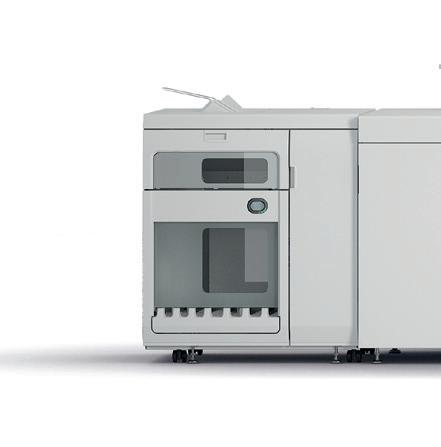



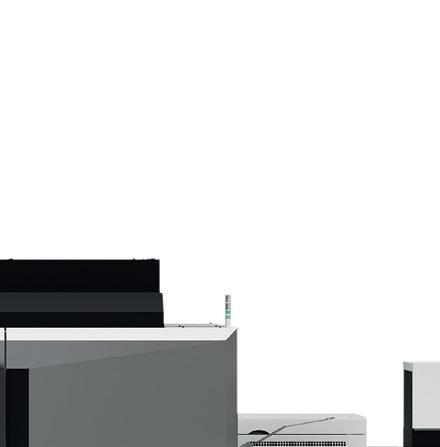


P R O D U C T I V I T Y . Q U A L I T Y .






V E R S A T I L I T Y .
As a global market leader in sheetfed inkjet, Canon offers more experience in this segment than others. Invest with confidence to expand profit and opportunity! Experience iX!

As the year kicks off, we turn our attention to 2025 and how significant, globally defining factors will shape the printing industry.
2024 was an historic election year with more than 70 countries taking to the ballot boxes. In over 80% of democracies the incumbents were voted out. In Europe this has resulted in significant national shifts and regional instability due to the polarisation of the left and the right. It has had a financial impact, particularly on interest rates. As print growth follows GDP growth, a reduction in business opportunities and trade volume is likely. Proving a hindrance too, will be trade barriers limiting transactions for export to the US.
America was no different. As well as the political change accompanying the return of a Trump administration the rest of the world will, it seems, face higher import taxes. This will affect orders and may drive a shift towards local production of price sensitive products. Demand for imported print may move away from commodity applications to focus on high quality items such as luxury coffee table books and specialist publications.
War continued to have an impact on business in 2024 and it will be shaping it in 2025 too. All eyes will continue to be on the Russia-Ukraine war while potentially

damaging boycotts will be created by the conflict in Gaza.
The full impact of all these influencing elements is still yet to be completely understood as situations evolve daily.
Continuing to evolve too, is universal commitment to environmental responsibility for print production. The Paris Climate Agreement and more recently COP 29 have reconfirmed a wide international effort. In Europe Print Service Providers (PSPs) are working on meeting the 2024 European Corporate Sustainability Reporting Directive (CSRD) which requires any business with revenue of more than E40m (and any non-European company doing business in Europe with more than E150M) to start quantifying and measuring their sustainability performance.
We have all seen how extreme weather has added to the cost of operations as companies invest in making supply chains more flexible while customer activism is set to put pressure on companies to exceed legal standards. Plastic bans will continue to encourage greater adoption of paper solutions, especially in packaging, labels, and cards applications, while the emphasis on local production will increase, benefiting those PSPs that are as close as possible to their clients. All of which ensure sustainability will






become an increasingly key factor in purchasing decisions for print.
PSPs are also having to ready themselves for more stringent data protection laws with regards to hosting customer data owned by their clients, new employment laws, and stricter health and safety requirements. The disconnection between the creation and governing of laws in different countries has the potential to impact the export and import of printed products, favouring the online selling of print.
In fact, 2024 was a significant year for online print as for the first time more than 50% of all print sold was online. Digitisation of documents is continuing to accelerate while inkjet is becoming a dominant print technology in many applications. There is a growing focus as well on what AI can do and how the use of robots can increase productivity.
At the same time PSPs are changing from a labour intensive to capital intensive business model. Most have to borrow money to finance new equipment and those that experience challenges in finding and retaining skilled labour may find capacity and production under pressure. Investing in digital printing capabilities and automation can help mitigate employment costs, reduce waste associated with analogue production, and increase production flexibility to manage last minute orders – no matter the volume. The recent easing of challenges surrounding the supply of consumables

and substrates has enabled PSPs to refocus their attention on improving operational efficiency and productivity.
While the stabilisation of inflation might help, operations will continue to face expenditure increases on a number of fronts - rising energy prices affecting costs and travel, higher interest rates impacting national debts and hindering access to capital, trade barriers limiting transactions with some countries and placing downward pressure on consumer spending. This could result in reduced spending on printed communication, especially in retail and photo merchandise. It may also drive the consolidation of printers in certain markets.

There are social and cultural considerations to consider as well, from an ageing population impacting access to a skilled workforce and more and more people working from home. Other considerations include migration and a mounting trend of income inequality. Also proving transformative is the growth in retail e-commerce sales estimated to exceed $4.1 trillion worldwide by the end of 2024 with new heights expected to be reached in the years ahead. Children’s literacy is seeing a widespread decline, and that has the potential to reduce the run length of books, possibly driving digital production. We are seeing too, an increase in active monthly users on social media despite privacy issues, the proliferation of fake news, and inaccurate sponsored posts. This may actually boost printed communications.
The printing industry landscape in 2025, as we see it now, is marked by economic uncertainty, environmental demands, and rapid technological innovation. PSPs that embrace sustainability, digitisation, and automation will be well positioned to adapt to shifting consumer and client preferences as well as regulatory pressures. This will empower their resilience and growth, despite the evolving global conditions.
It is Ricoh’s mission and vision to empower individuals to find Fulfilment through Work by understanding and transforming how people work so we can unleash their potential and creativity to realize a sustainable future.
Thank you for trusting CGS ORIS solutions


“Change has never been this fast. It will never be this slow again.” This famous quote by Justin Trudeau during his 2018 speech at Davos perfectly encapsulates the era we are living in. One where the pace of change – particularly technological change – is accelerating faster than we can truly imagine.

An opportunity? Or a threat? Change can be both. The worst thing to do in the face of a fast-changing environment is nothing at all. However, big traditional industries like the packaging industry are not always the quickest to embrace change and adopt new technology.
‘Industry 4.0’ has been discussed for several years, but digital transformation is still slow-going in many packaging companies. A McKinsey poll of global manufacturing companies found that only 26% said they had scaled some or many Industry 4.0 use cases.[1] The reason? In the packaging industry, many companies are still primarily focused on the short to medium term, and perhaps have concerns about the initial investment required to integrate new technology.
But we have reached an inflection point. Companies must think like start-ups –embrace change, and be flexible, quick to act, and agile.
Below are five reasons why. And how BOBST – with our strategy built on the pillars of digitalization, connectivity, automation and sustainability – can help brand owners and converters to adapt to the new reality and future-proof their businesses.
Meet rapidly changing consumer tastes and priorities
The rise in technology has handed power
to the consumer. In the past, brands had much more control. Packaging was standardized, batch sizes and time to market were more predictable.
With technology today, consumers have a voice to engage with brands and their peers. They want personalization, unique and memorable experiences. They want sustainability. And in the sea of consumer items, they want something new, which stands out, and speaks to them as a person.
Brand owners and converters have no choice but to keep pace with rapidly changing consumer tastes and priorities. This means shorter runs and shorter times to market. To be able to deliver this, they must embrace solutions with digitalization, connectivity and automation.
There are many BOBST solutions that make this a reality. For example, the


MASTER M5 for labels and flexible packaging is built for full digitalization of the production workflow, the ultimate press for converters willing to automate their production line. Configurable with print cylinders or sleeves, the machine is ready to be equipped with oneECG technology delivering repeatable consistency run after run, irrespective of the application run length. It has high press uptime and enables very fast timeto-market.
of governments, companies, and individuals all over the world. In the past, sustainability in packaging was a ‘nice to have’ – something to aspire to, but not necessarily a priority. No longer.
Major corporations have made bold sustainability pledges, which the packaging industry must now help to deliver. Sustainability has become a leading priority for consumers. At BOBST, as leaders in the packaging industry, we
range of innovative, industrially viable recycle-ready mono-material substrates as alternatives to non-recyclable multimaterial film.
And with our Competence Center facilities and R&D process experts we are helping brand owners, converters and industry partners by using our equipment and laboratories to develop their own solutions and meet their own company sustainability targets.
Tackling global environmental challenges may seem daunting, but there are steps that all brand owners and converters can take to rapidly improve the sustainability of their packaging.
Adapt to new workforce realities
There is a global skills shortage affecting converters, which will only become more pronounced. Traditional printing and packaging methods rely on skilled packaging technicians; a decade or two ago, you would find converters filled with skilled technicians who had made a lifetime career of their abilities. That

Or take gravure, which has always been a clear choice for premium quality packaging but until now has been challenging for shorter print runs and faster delivery. BOBST’s smartGRAVURE – developed for the MASTER RS 6003 for flexible packaging – transforms gravure from a highly manual operation to a fully digitalized workflow. As set-up times are offline, machine downtime for preparation is significantly reduced. Printers can produce exceptional and consistent quality, while delivering orders quickly with high profitability, whether they are small, medium or long runs.
Shorter runs and rapid time-to-market are possible – all while maintaining the highest print quality.
Face global sustainability challenges head on Environmental and sustainability issues are at the top of the agenda
believe we have a responsibility to lead and innovate in this space and to help converters and brand owners meet sustainability targets.
That’s why we are reducing the environmental impact of future and existing packaging machines – for example, reducing energy consumption by 20% for the machines we will sell in 2030 vs our baseline of 2022. We are also improving equipment sustainability through reduction of ink, waste, and substrate. For example, oneECG –our extended color gamut technology, which digitalizes and automates color management – creates no ink waste, uses 30% less ink, and reduces make-ready time and make-ready waste by up to 90%.
We’re also helping to pioneer environmentally friendlier packaging. Together with leading industry partners, we have developed oneBARRIER, a
is no longer the case. Workers trained on traditional printing technologies are retiring, and there are not enough trained technicians coming through the ranks to fill their places.
This trend increases the need for easy-touse and automated machines. It increases the preference for all-in-one or one-pass printing solutions over multi-process solutions. Digital solutions will become more prominent, displacing conventional technologies and bridging the skills gap.
The DIGITAL MASTER series for labels is a good example, leveraging proven flexo approaches with recent innovative inkjet developments, providing a fully digitalized and automated production line from printing to embellishment and die-cutting, all coupled with inline quality inspection at full speed and automatic calibration thanks to BOBST ACCUCHECK system.

Each print, embellishment and finishing module includes a high degree of digitalization and automation for exceptionally high uptime, low waste, high quality and outstanding repeatability regardless of the operator’s skills. But automation and digitalization alone are not enough; the real benefit is the fact that all modules are fully developed by BOBST and driven by one single piece of software, ensuring perfect synchronization.
Another example is oneSET, part of the smartGRAVURE package. Gravure traditionally relies on a manual set up process requiring high skill levels, however with oneSET, the system automatically suggests the most suitable and efficient machine settings based on the basic job parameters in the customer’s PDF file.
Or the intelligent Metallizing Assistant, which represents a breakthrough in machine integrated process expertise for vacuum metallizing. It automates the deposition process, resulting in more output and consistency of the end product, while dramatically reducing required training time for operators.
It's also important to stress that it is not a case of machines replacing the human workforce throughout the industry. Rather, changes in job descriptions and roles will create new and exciting opportunities for careers – for example those with training and expertise in digital and AI.
Future-proof businesses in the face of global uncertainty
The Global Peace Index states that the world has become less stable in the past 17 years with substantial increases in political instability, number of conflicts, and violent demonstrations.[2] With a global pandemic in the mix too, we have been living through a period of significant uncertainty.
For the packaging industry, the uncertainty has led to a series of challenges, including hikes in raw material costs, disruptions to supply chains, and fluctuations in market demand.
In the face of uncertainty, converters need reliability – machines they can count on, connected to a partner with the abilities and reach to act quickly if support is needed. For example, BOBST’s remote assistance services, Helpline Essential and Helpline Advanced, ensure customers reduce machine downtime and save on repair costs. Connectivity enables provision of data to inform rapid decision making. Our three global distribution centers ensure optimal delivery times of spare parts.
BOBST also acts as a strategic partner for its customers. BOBST Application Management is a hands-on innovative consulting service, which is designed for the needs of converters and brand owners. Through BOBST Application Management, customers can receive guidance on technologies, raw materials,
processes and business cases along the entire packaging value chain.
Maintain a competitive advantage and don’t get left behind Competition in the packaging industry is fiercer than ever before. It’s vital that brand owners and converters stay ahead of industry trends and establish a competitive advantage.
The pillars on which BOBST built its global strategy in recent years— connectivity, digitalization, automation, and sustainability—have indeed emerged as global market trends in printing and converting. These pillars are now completely transforming the packaging value chain, from a series of isolated silos to a connected end-to-end overview. We are seeing a major acceleration of data usage from PDF to twin PDF, job recipe, machine learning, AI and using best information throughout the production workflow end to end. Embracing these pillars can help customers to address their pain points, gain a competitive advantage, and reach their targets.
At the heart of the transformation is BOBST Connect, our cloud-based digital platform that enables overview and orchestration of the production process, enhancing and improving the packaging productivity of our equipment. BOBST Connect is constantly evolving, and regularly introducing new functionalities helps secure investments and enhance productivity.

By 2028, it is expected that 21% of Japan’s cosmetics and toiletries (C&T) market will be driven by online shopping, underscoring the necessity for improved consumer protection measures in the online purchasing of these items.
C&T manufacturers stand to benefit significantly by investing in innovative packaging technologies, such as blockchain and data tracking to check counterfeiting. This trend coincides with the anticipated value growth of e-commerce sales in Japan’s C&T industry, which is set to expand at a compound annual growth rate (CAGR) of 5-7% during 2023–28^, says GlobalData, a leading data and analytics company.
Mani Bhushan Shukla, Consumer Analyst at GlobalData, comments: “C&T brands face significant risks from counterfeit products, making it essential to tackle these issues to protect consumer safety and preserve brand reputation. As more customers shop online, where they can’t interact with sales personnel or physically test products, investing in innovative packaging solutions becomes crucial. Intelligent packaging can offer consumers the reassurance they need by providing authentication and transparency, helping brands safeguard their products and build trust with their customers.”
Mariko Kadosaka, Key Account Director, Japan, GlobalData, notes: “Modern consumers are increasingly interested in the details of the products they purchase, such as the origin of ingredients, sustainability credentials, and packaging recy-

clability. Intelligent packaging can meet these demands by incorporating features like scannable QR codes, which provide buyers with specific information. This transparency helps build consumer trust and reassures them about the products, strengthening their connection with the brands they engage with.”
Shukla adds: “Consumers, particularly in younger demographics, are highly attuned to pricing, brand image, and current trends, driving their demand for the latest products at competitive prices. This group is also comfortable with online interactions, where beauty influencers frequently

promote products on social media, leading to a significant rise in online purchasing behavior. Their active presence on social media and awareness of trends may render them more vulnerable to counterfeit goods.
“A survey corroborates this trend, where 46% of gen Z and 58% of millennials among Japanese respondents stated that they have been buying non-grocery products online, including C&T, more often in the last three months. Correspondingly, 35% of gen Z respondents and 37% of millennials stated that they have been engaging in more frequent purchases of non-grocery products through social media platforms, including C&T*.”
Kadosaka continues: “The counterfeit market, valued at trillions of dollars, presents a major global challenge across industries, including C&T. To combat this issue, many companies are turning to technology for solutions that serve various purposes. This shift is driven by the need to showcase the sustainability and ethical practices of their supply chains, in addition to addressing counterfeiting concerns. Align-

ing with this trend, Meiyume introduced NFC-enabled smart packaging to address counterfeiting, enhance consumer personalization, and strengthen brand value.
“The importance of intelligent packaging is increasing alongside the digitalization of supply chain operations. New packaging features, incorporating advanced “smart” technologies, offer manufacturers the opportunity to revolutionize their operations.
These innovations can optimize inventory management, reduce transportation costs, and minimize waste, leading to more efficient and sustainable supply chains.”
Shukla concludes: “The future of intelligent packaging solutions offers key benefits, including improved consumer engagement, reduced counterfeiting, and enhanced brand loyalty. Interactive packaging can attract first-time buyers and
encourage repeat purchases by offering unique experiences. With numerous ecommerce touchpoints, consumers are often drawn to appealing offers from trusted brands. By implementing intelligent packaging, either through an application or directly on the product, both consumers and brands benefit: consumers receive secure, trustworthy products, while brands protect their trademarks and preserve their reputations.”


By Mike Agness, Executive Vice President, Americas, HYBRID Software
Expanded color gamut (ECG) printing for digital and conventional presses isn’t new. Every digital press relies on expanded gamut printing, and many of us have been operating one for a while. Whether it’s four-color, five-color, sixcolor or seven-color, you get greater spectral range when you add more inks to the process.
Color management must be utilized to map out brand colors, matching them as closely as possible to be acceptable and consistent on the shelves next to similar packages. While it has been adopted by many, the practice of applying maximum efficiencies has been often ignored.
Adapting a digital ECG workflow to conventional presses, you make the most money and efficiencies by keeping the press running with the same substrate and inks. How you best optimize the press is by analyzing jobs and getting the data right – not catering to printing specialty stock or specialty inks. Arriving to some standardization with ECG brings you closer to those efficiencies.
This requires a reliance on data to optimize efficient printing, along with planning for ECG manufacturing. Data analysis is extremely important. You’re most efficient when you look at your business book- or in-house orders –and plan from complex components to optimize common material and resources.
Getting as many similar items to print across the web requires different thinking; even down to how plates are made. When adapting to ECG, avoid selling a five-color job (CMYK plus special ink) for a sevencolor print process. Fit each job into a standard process – and control it! You optimize manufacturing by taking many different jobs, and driving those ECG efficiencies. In the past you might have output plates with multiple jobs. Now, it may be advisable to output ‘singles’ that are stepped out on a mounter for greater optimization.
What is meant by the data? It’s the job specs. Look at substrates, order quantities and finishing techniques. Imagine quoting a job and gaining a 20 percent additional margin with an optimized manufacturing process utilizing those efficiencies, taking advantage of ECG as one of
the components. Color conversion enables the further analysis of data for optimization of order quantity; basically, optimizing everything. You can complete more than one job at a time rather than working on one, and then moving to the next.
Imagine Neapolitan ice cream. Maybe there’s not as much strawberry sold as chocolate and vanilla. You might need two-up of chocolate, three-up of vanilla, and one-up of strawberry to fit order quantities. By intelligently building your plates, you can reduce your print run lengths by optimizing across the press width.
But, data must be constantly scrutinized. For example, strawberry might sell better in the summer than the winter. So, you may need to optimize the ganging of flavors seasonally. There are many systems for planning. It’s predictable when done correctly. You just need to feed the data into the algorithms – whatever you’re using – to get optimized information out.
It’s helpful if you can convince your clients to use common substrates, but plans must also be made for finishing

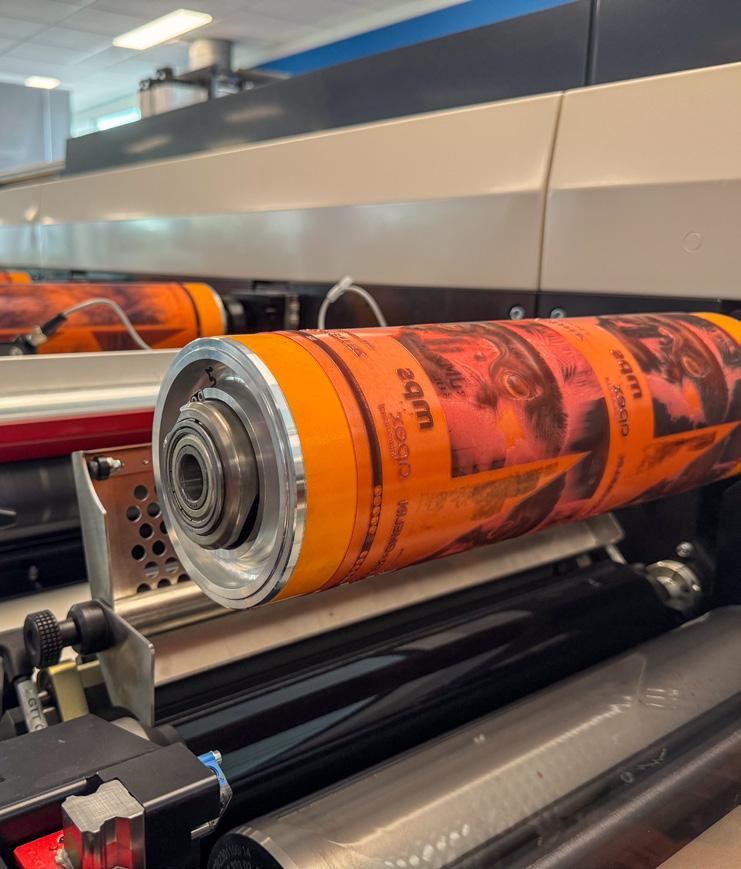
Elevate your printing possibilities with Extended Colour Gamut (ECG) technology. Our MPS presses enable you to produce 97% of Pantone colours using ECG along with unparalleled image detail.

and slitting, among other tasks, more efficiently. Many ECG job challenges occur during finishing.
ERP must capture order data. Ideally prepress systems will gather the data and associated files and deliver them to planning. Algorithms determine the most optimal way to print – as well as manufacturing scheduling and finishing.
The greatest cost in manufacturing occurs when you’re not running, or manufacturing, anything. This happens when changing inks and washing up. A consistent ECG ink process makes it easier to squeeze in rush jobs because you’re not dealing with wash-ups. You can plan to gang orders on Wednesday and print on Friday (or sooner!).
We help brands by being more efficient, and explaining how this can be achieved. As a converter, you must get jobs done faster so that rush jobs can fit in and be shipped. By selecting more jobs that exactly fit the same manufacturing processes, you can analyze them, and monitor and change priorities for those that are truly urgent.
Remind brands of the challenges printing with brand inks bring. It could take a while to create the ink. Or, the package uses
such an extreme amount of ink, suddenly causing a supply chain shortage of an ink component. Of course, an extremely long run will hold up other jobs. By printing with ECG, you can stock inks easier and manage them faster.
Should a brand want to improve packaging sustainability and explore ECG, it’s best to migrate with a new design or product launch. It’s likely everybody will rebrand in the next few years, ironically because of sustainability.
The converter should remind the brand that ECG is more eco-friendly. There’s less waste. I believe that in the end, price, convenience and speed win over quality. That doesn’t mean that ECG skimps on quality. All the graphics can be enhanced with a greater color spectrum. Newer screening technologies have also mitigated more challenges of the past. And, if you’re still mixing brand inks, you can’t bet that the ink that you built today will exactly match the ink from a year ago.
How can you plan for better ECG efficiencies?
1. Standardization is key. The more similar each job is to the next, the more efficient production becomes.
2. Utilize a color management system that easily and accurately matches brand colors.
3. Make sure that all job data is captured in business and production systems.
4. Implement an effective production system that optimally combines similar specs ( colors, substrates, inks, finishing, etc.) for efficient job ganging.
5. Tell the brand owner how ECG can benefit business. Discuss alt of the process variables, and how they can be analyzed for optimum packaging results.
If you’ve moved to ECG, congratulations. You’ve probably seen measurable production results. Now, go further by ganging jobs optimally. You’ll see even greater rewards

































to print MDO-PE
Highest quality with best register
Connected to RUBY to digitize the value chain ... and many more!

Windmöller & Hölscher KG
Lengerich / Germany
Phone + 49 5481 14 - 0 · info@wuh-group.com www.wh.group/int/en/































Best profitability at printing speeds up to 600 m/min. and fast job changes












